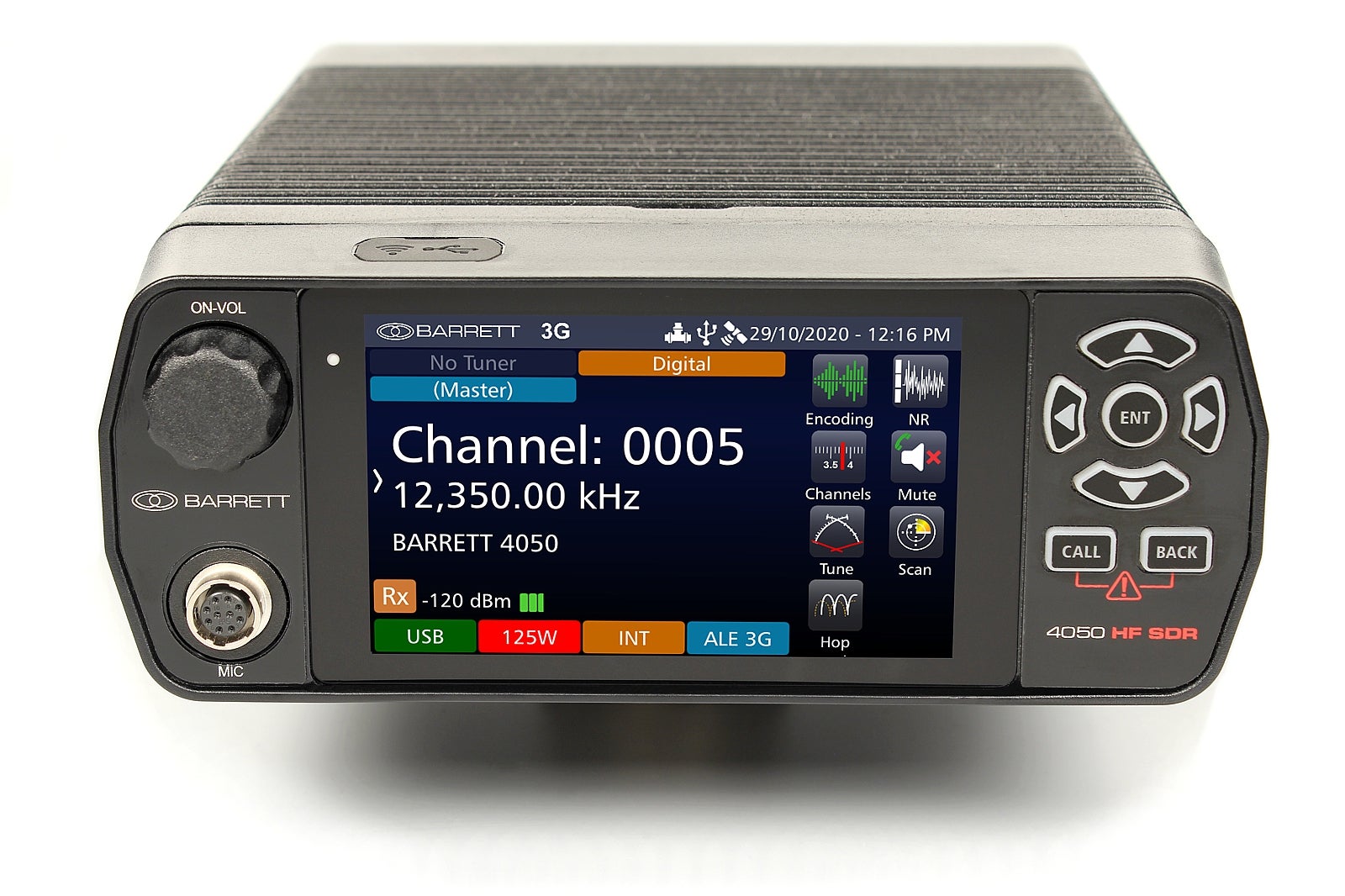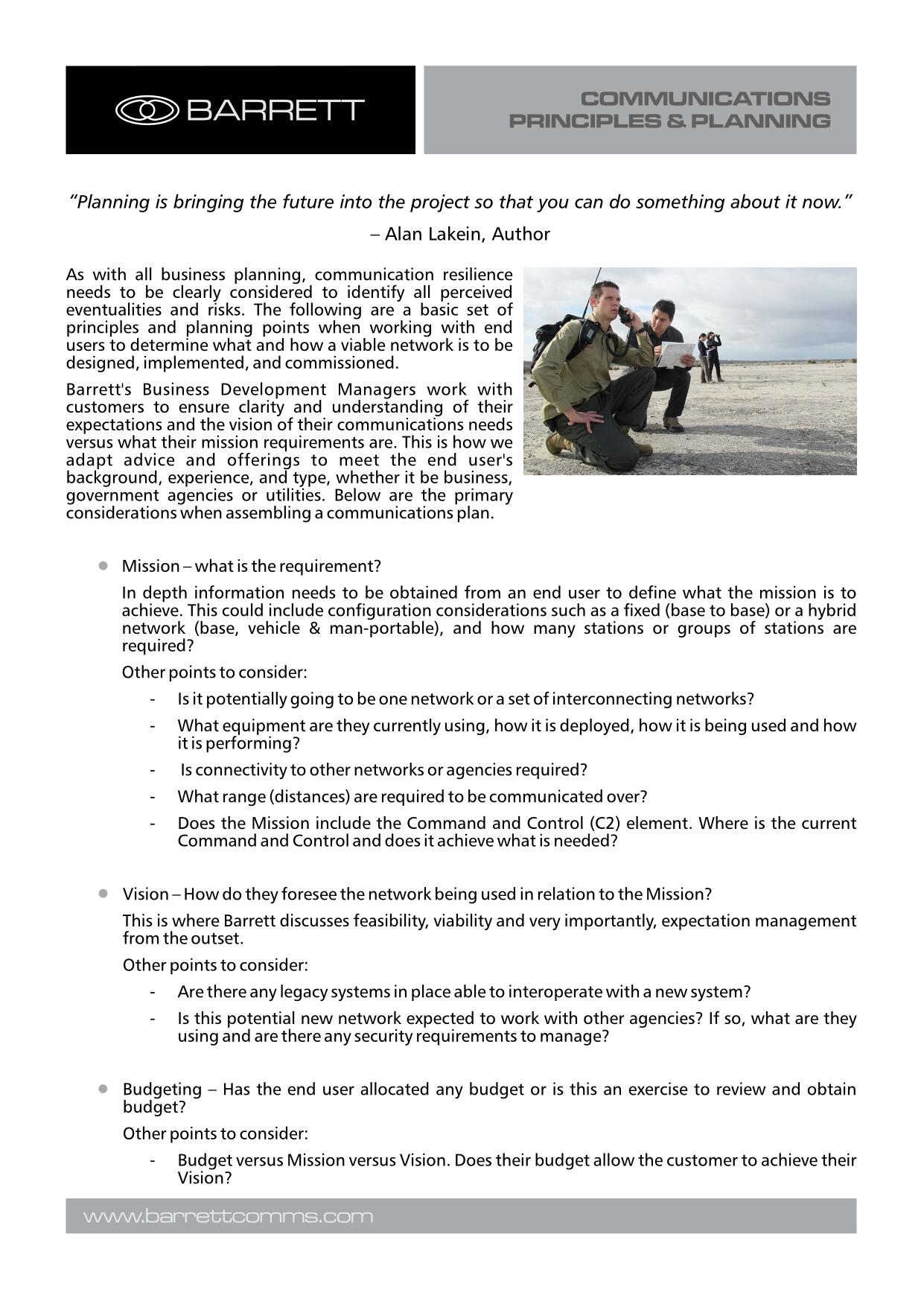
It is a reality of the world we live in that we are all becoming more attuned to watching natural disasters play out in countries all around the world. From wildfires to floods, hurricanes to earthquakes, there’s a pattern of increased frequency for all types of disaster. And this is certainly one factor in a current growth in demand for high frequency (HF) communications.
Andrew Burt, CEO of Barrett Communications, designers and manufacturers of HF and VHF radio communications equipment, explains there is something undeniably useful about a simple and naturally occurring means of communication, such as HF, that doesn’t rely on a infrastructure.
“Whenever there is a major disaster it’s nearly always the case that telephony, mobile and satellite communications are temporarily disabled. This is when HF comes into its own. One of the big advantages with HF is its reliability and availability. It’s always there, it can’t be turned off, it exists naturally in the ionosphere.”
Burt admits that the market for HF has changed over the years. “With the advent of mobile, cellular phone technology, and the proliferation of the internet, even throughout Africa, the use of HF has changed.
It is now much more needs-orientated and relates to areas where there is literally no infrastructure or a high risk of natural disaster. More specifically, it relates to what we call critical infrastructure. Critical infrastructure is the infrastructure we depend on to make sure everything functions in the event of a disaster.
“It’s your first response when there’s an earthquake and the internet isn’t available, mobile cellular isn’t available and satellite communications aren’t available, because everything has shifted or come down.
“HF is very quickly established as the emergency communications medium, because it’s not dependent on the inherent infrastructure that cellular technology uses, such as communications towers and internet technologies.”
Another area where HF communications is succeeding is in the area of marine and aviation applications. “The global marine distress safety system (GMDSS), civil aviation and airports across the world all rely on HF communications every day,” explains Burt.
Burt adds this is particularly noticeable in the US. “The hypothesis when I look at systems for smaller airports, is that they’re very key in critical infrastructure. The US is very big on resilience and building resilience into the National Grid, whether that’s power stations or linking hospitals, or connecting small county airports over HF.
They recognise that in areas prone to natural disasters such as earthquakes, hurricanes, and tornadoes, the first priority is to support recovery and deliver emergency services all of which depend on the re-establishment of communications. HF radio is a key tool for the first responders, delivering rapidly deployed communications within minutes of arrival at site.
“Over the last two years we have seen increased sales in the US critical infrastructure space and believe America offers significant future market opportunities for HF communications.”
In Europe, it remains harder to convince buyers of the need for critical infrastructure, says Burt. “With something like 99.9% GSM coverage and extensive Tetra communications networks, Europe has significant resilience and redundancy in its communications infrastructure. Europe tends to see HF as a military platform bearer and nothing else. But there are opportunities in Europe and HF is having something of a revival there as well.”
There is also, perhaps naturally given its size and lack of infrastructure, a growing market in Africa. “In Africa, you see HF in day-to-day use by hospitals and UN missions. UN peacekeeping is historically one of our biggest customers, along with government agencies and commercial organisations.
As Africa develops its infrastructure, so its use of HF has changed and has become increasingly common to use it as an emergency network, rather than a day-to-day operational network.”
Barrett Communications success is driven partly by its reputation for intuitive ease of use and for having a platform that is consistent across its entire range. “This consistency matters,” says Burt, “it reduces the training burden as all Barrett radios share a common user interface across manpack portable systems, base station, and mobile platforms.”


